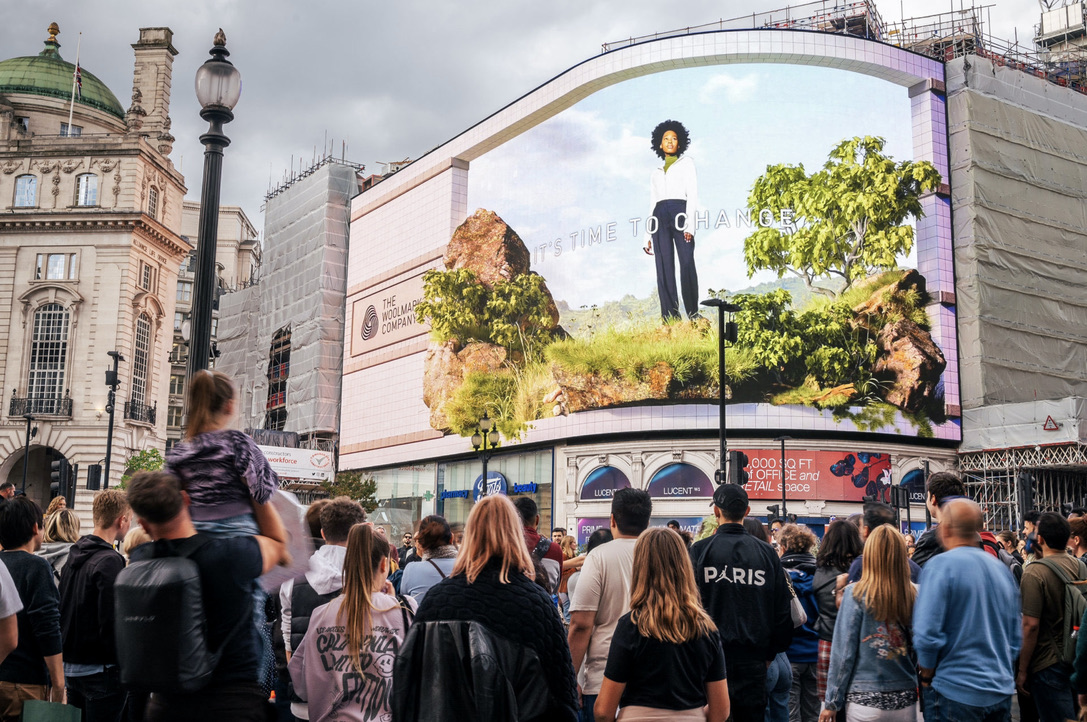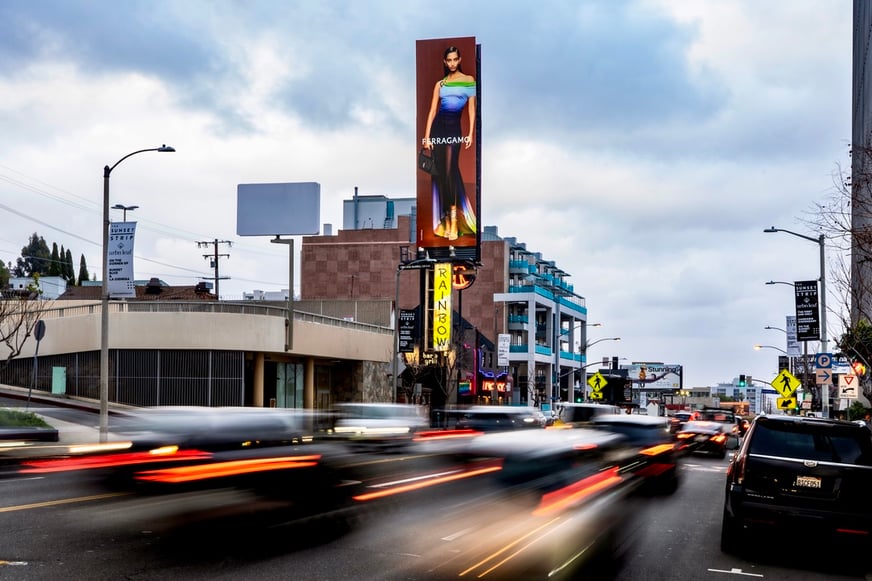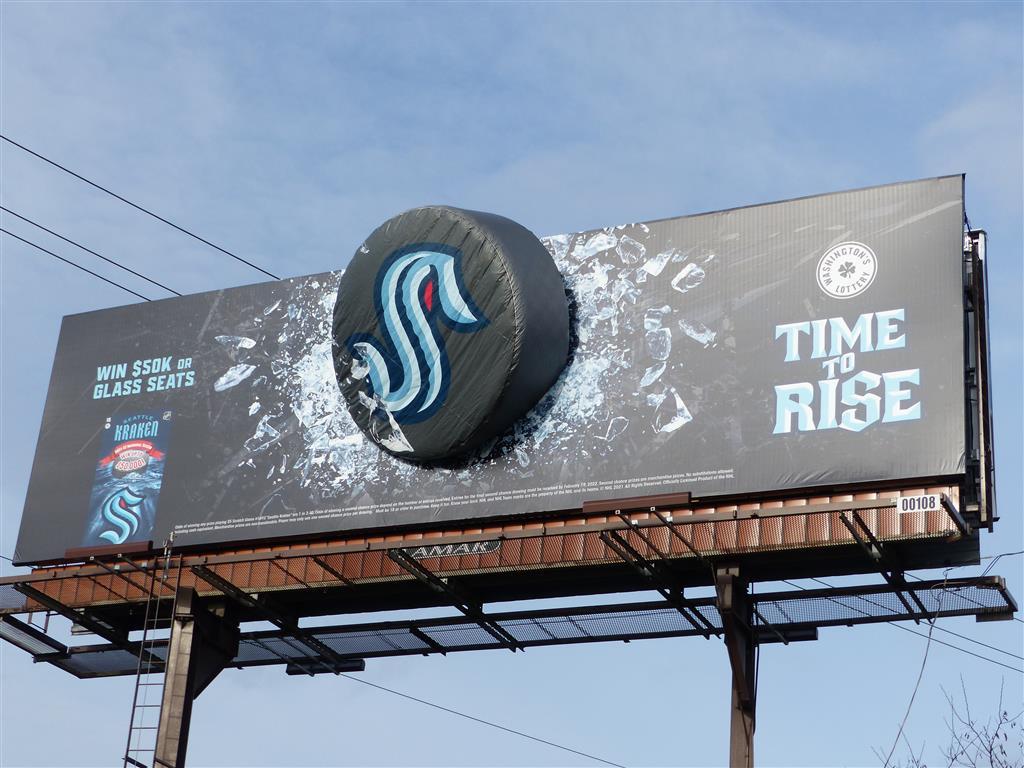
What goes into producing a Billboard or a multi-market Out-of-Home (OOH) campaign? The process of buying, producing, and installing a Billboard or its various formats is much more involved than just buying the ad space and handing over your creative. There are many players, materials and a lot of planning that happens behind the scenes to ensure that your advertisement is successful.
Navigating many partners, materials and placements quickly becomes overwhelming for any single expert to navigate OOH alone. Production affects timelines and budgets. Understanding the process is key to executing quality campaigns on budget and on schedule.
In this article, you’ll learn step-by-step who is involved in OOH production, their roles and responsibilities, and how to overcome potential pitfalls. We’ll also show you how working with an OOH specialist like Billups can smooth the production process into a simple turnkey experience.
Before even requesting OOH units for your campaign, the advertiser or agency will first need to have an idea for one or more creatives, determine what market or markets to target, decide how long campaigns will run, and determine campaign goals. You’ll also want to know what formats you would like to use. You must supply creative materials with certain sizes and specifications to fit each format on your plan.
Our production team at Billups leads the collection of specifications and requirements needed to bring your approved OOH plan to life. In many cases, standard sizes are utilized, but the beauty of OOH is that there is no one-size-fits-all solution. For specialty programs with unique formats and sizes, we recommend a kick-off call between the creative team and production leads to discuss artwork needs, placement /unit types, and creative rotation prior to producing.
.jpg?width=858&height=537&name=digital-bulletin-cloudera%20(2).jpg)
Example of a typical 14’H x 48’W traditional static Billboard/Bulletin.
Once you know the goals and basic elements of your OOH campaign, there are a couple of options and considerations to keep in mind.
First, you must view available inventory and submit RFPs to the media owners you would like to use. Depending on the markets you are targeting and the size of your campaign, you may research 60-80 media owners and buy placements from 20 of them.

You will need to submit a separate RFP for every media owner you use. If your company is running a smaller campaign of one billboard or a few signs in a limited area then you may be able to work directly with just one or two media owners.
However, for most campaigns partnering with an OOH specialist company like Billups can help you develop a comprehensive strategy that will serve your target demographics and submit RFPs to all of the media owners for you. This can help you to develop a more effective campaign and saves you the time and hassle of managing relationships with dozens of media owners.
The next step is to identify a production company. Media owners can also offer production, but working directly with them can be expensive and time-consuming for larger-scale campaigns involving dozens of media owners.
If you hire a production company separate from the media owner (as many agencies have preferred printing partners), then you are putting on the additional hat of project manager between the production company and media owner(s).
While this is manageable for smaller-scale campaigns, it can be tough for an advertiser or agency to manage and coordinate larger multi-market campaigns. By partnering with a OOH media specialist company that also handles production, like Billups, they handle all of the printing and production process for you. Billups also coordinates printing and production with media owners throughout campaign planning and execution.
Next, we will take a look at what happens once you’ve secured your placements and are ready to produce your OOH placements.
You must give the creative files to the printer in specific formats related to the purchased unit/s. Luckily, most mechanical specifications are standardized.
The production team coordinates with the print partner to order the materials and then submits the artwork to the printer. The team then sends PDF proofs or hard proofs on 1ft by 4ft vinyl, if requested, to the client.
The agency or advertiser then reviews the proofs to make sure there are no mistakes and that it is readable. If there are any issues with the artwork then the advertiser updates the art, and the production team sends it to the printer.
Production can take anywhere from two days to three weeks. The production team ships the finalized printed creatives to the media owner with posting instructions. The media owner installs the OOH placement and sends photos to verify proof of placement.
Over the years printers have gotten larger and faster, however, printing is one part of the production process where a trusted production partner, like Billups, can help avoid or mitigate issues that may arise, including:
To make a physical billboard, it is necessary to have physical materials. Materials are much more lightweight than in years past. Posters once called 30-sheets, now only need one sheet of poster flex for installation.
There is a variety of materials that can be used for installation, including inflatable and 3D embellishments. Billups partners with prop companies like Softsigns 3D to bring 3D creations to life. 
Besides physical materials, advertisers can also use different lighting options, glow-in-the-dark paints, and gel lighting covers to create unique moods.
According to OAAA, the industry has been committed to finding supplemental uses for used billboard vinyl for many years. Traditional paper-and-paste poster methods have been replaced with a new poster installation system that accommodates polyethylene(PE) and other single-sheet substrates. The material is lightweight, flexible, and extremely strong. It also lasts longer and is easier and safer to install than traditional methods.
Advertisers can also use eco-friendly paints that remove CO2 from the atmosphere. There are many ways to show your brand's commitment to green in the OOH space.
There is no physical production or printing involved for DOOH. There is also no need for the media owner to hire installers.
3D DOOH requires a bit more work for production, due to longer timelines for creative production. The display or a virtual mock-up of the display needs to be tested to ensure visuals will display properly from the prescribed viewing area. However, 3D DOOH doesn’t require coordinating with a print shop.
At Billups, our production studio is limited to static production for things we contract with a partner to produce or a 3D prop supplier. However, our media team partners with anamorphic companies like BCN Visuals to produce stunning experiential displays.
The final step in the production process is ensuring that your campaign creatives are installed. Once the materials have been printed they need to be sent to all the media owners with instructions for posting.
Posting instructions tell the media owner how to install your creative. The package label includes details about your creative, including a thumbnail of the visual, the name of the client, the start date for the advertisement, and the unit number. At Billups, we also send a follow-up email to the media owner when the shipment is sent that reiterates all the details of the shipment and provides additional posting information to ensure your creatives show the way they were intended.
If something goes wrong with posting instructions then it can lead to posts that are installed on the wrong units, which could be an issue if you have creatives running in multiple languages based on the demographic area.
Creatives could also be installed with the wrong orientation. This could cause problems if your creative includes any directional information for your target audience, such a sign with an arrow pointing towards your physical location.
A trusted production partner, like Billups, can help you to mitigate and quickly fix any issues that may arise during installation.
While it is possible to run a campaign or multiple campaigns on your own, working with a media specialist, such as Billups, can transform the production process into a turnkey event.
At Billups, we do Out-Of-Home media strategy planning and buying for our clients which often requires producing static units. We handle all elements of the production process for you. More often than not, our clients run many campaigns in multiple markets throughout the country. If you have a high diversity of units, volume, and campaigns you can partner with an OOH specialist like Billups. The cost can be comparable to doing it on your own, but without the headache of having to manage it all.
We view every OOH project as a distinctive journey. We are constantly evolving our processes to the latest technology to help our clients create something fresh that meets our clients’ goals. Though the tasks may be similar, the act of creating is always unique. Want to learn more about how Billups can help you execute your OOH campaigns? Contact us today!
Dana Gyllen, Head of Production at Billups, is a 15+ year veteran in Advertising and Communications and has been with Billups since early 2009. Her division manages client creative materials and printing.
These Stories on Digital OOH
Don't worry—we won't share your information.